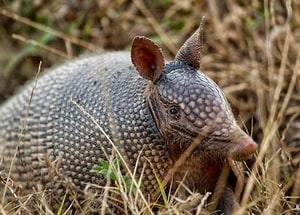Nature keeps striking us with its amazing inhabitants and diversity. When it comes to the armadillo, I can say that it is a fantastic animal whose cover resembles real armor. The protective layer of armadillos skin is so tough that it helps protect them from dangers and predators that haunt them.
However, even if you consider armadillos very interesting, their habits are quite ordinary, which makes it easy to catch them using a proven algorithm. Below, I will provide you with step-by-step instructions on how to trap an armadillo, and give some additional tips on catching an armadillo that will help you in this process.
[wpsm_titlebox title=”How to Trap Armadillos” style=”main”]
- Get a Safe Cage Trap.
- Set a Trap Correctly.
- Do not use bait. Armadillos do not eat food from the surface.
- Check your trap every morning. Considering that armadillos are more active in the dark time of the day, they are more likely to be caught at night.
[/wpsm_titlebox]
Top Armadillo Traps Buyer’s Guide
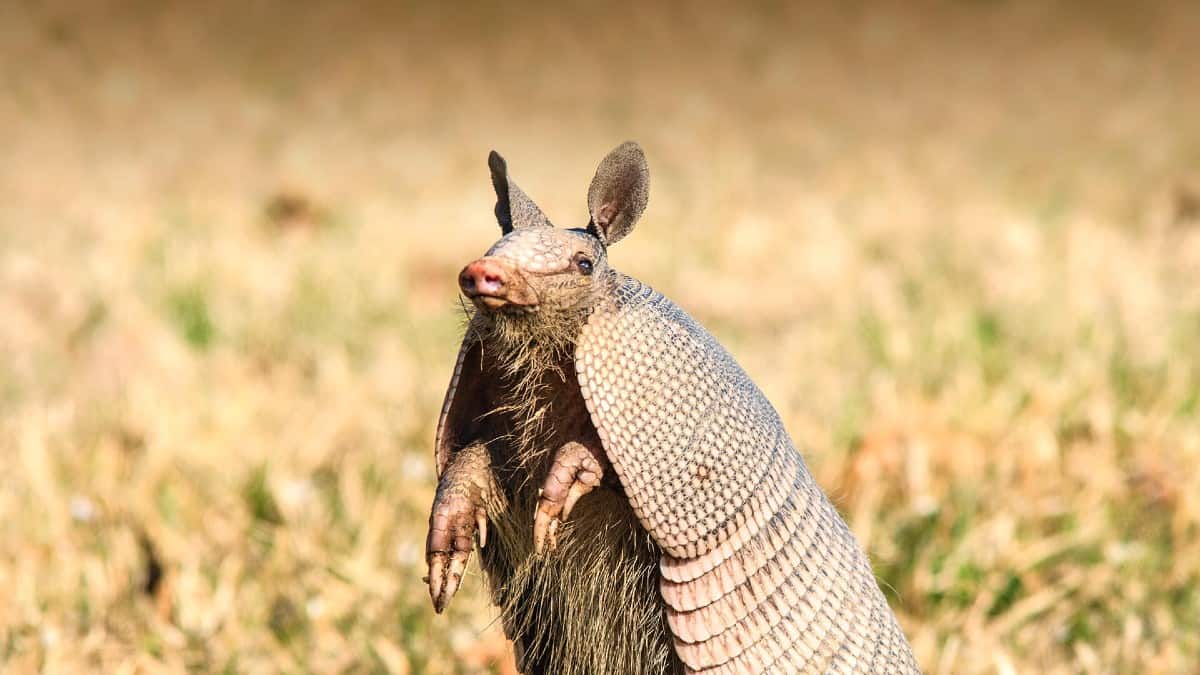
Usually, armadillos grow up to 40-50 cm and weigh up to 6 kg. Their tails can have a length from 25 to 40 cm. But if you think that these are huge sizes, you have never met the biggest armadillo species. The largest armadillos are called giants and grow up to 1.5 m with a weight of 30-65 kg. These animals are perfectly adapted for survival and food. Their skin and bone shells are exceptionally secure, which makes them probably undefeatable in a battle with a predator.
The tail of an armadillo is also covered with a special protective layer. The legs are equipped with large and powerful claws. Armadillos have an improved muscular system that is perfect for hard work of digging.

If armadillos feel danger, they dig more intensively to hide quickly. Most armadillo species live in South America, and only nine-banded individuals are more spread in North America. These animals cannot withstand low temperatures. Their body temperature begins to decline, and they become inactive.
How Can Armadillos Damage Your Garden?
Homeowners, gardeners, and farmers aren’t their fans at all, and here’s why. Have you seen armadillo’s claws? Their huge and strong claws are used for digging all over your property and destroying the root system of plants and greenery.
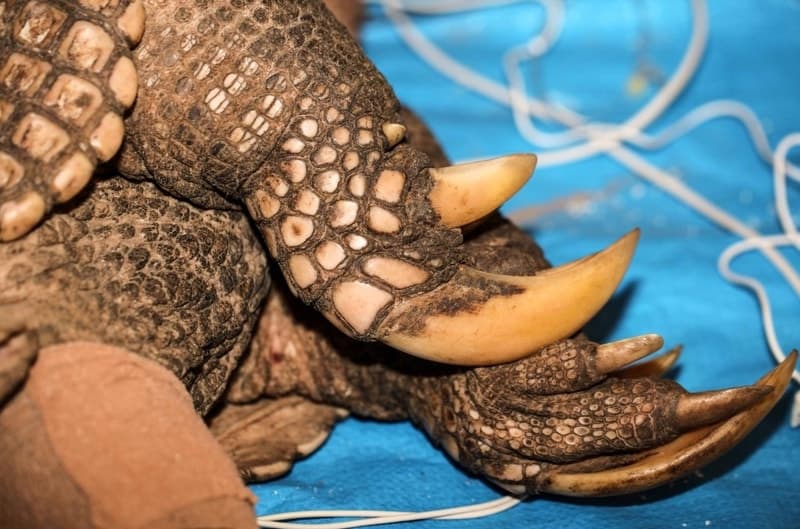
Just because these animals have minimal fat accumulation and poor metabolism, they spend most of the daytime underground. They tend to live in warm habitats and prefer to sleep in burrows in the ground to keep themselves warm.
Armadillos are super motivated to find shelter and food (larvae and insects), so they will easily destroy your lawns or gardens to find subsistence. By doing this, they destabilize the root systems of trees and bushes. When building the tunnels to hide, armadillos can go throughout the whole perimeter of your lawn or garden. Besides their destructive tendencies, armadillos are also known to be carriers of dangerous bacteria, which causes leprosy, so be careful when releasing the animal from the cage.
How to Trap Armadillos: a Step-by-Step Guide

Follow these simple steps to trap an armadillo that damages your yard and safely remove them from your property :
Get a Safe Cage Trap
Of course, the first step of trapping armadillos is to buy a proper cage trap. The best size for the cage is at least 32 x 10 x 12 inches. This is actually the size of a standard raccoon cage trap, so I don’t think you’ll have trouble with finding one. Look for a cage at your local physical store or check some online deals I also listed below.
Set a Trap Correctly
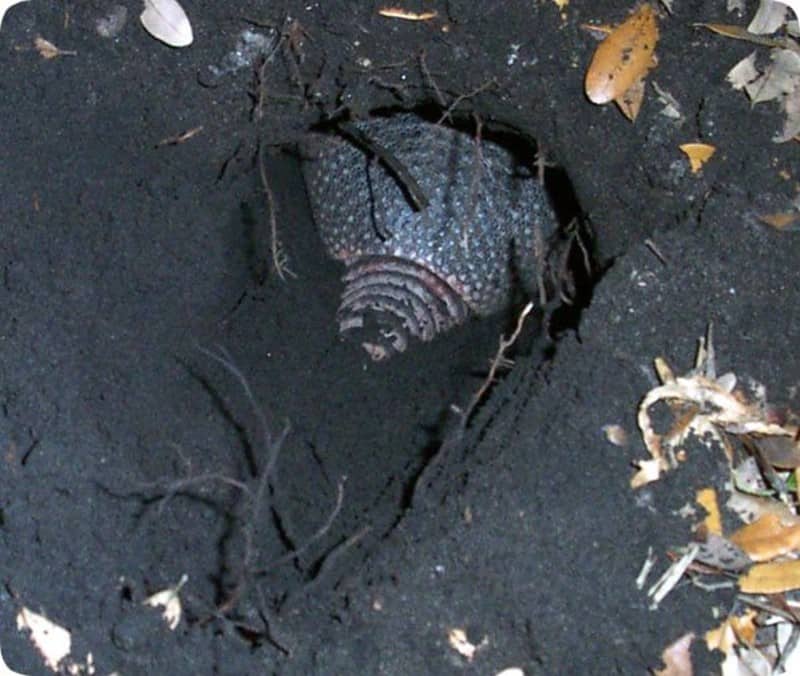
After the long process of digging and searching for food, an armadillo will probably hide in its burrow to have some rest. Therefore, I recommend setting a trap above the active hole and creating a mud lining along the surface.
Forget About the Baits
Many people believe that using a baiting trap is useful for catching an armadillo. From my experience, I can say that the bait wasn’t sufficient in most of the cases I faced. Keep in mind that armadillos excavate their food from the soil, so they do not eat food from the surface, and applying an armadillo bait for a live trap probably won’t work.
Using the bait is more useful to attract other animals, such as possums or bunnies, but not armadillos. Check your trap every morning. Considering that armadillos are more active in the dark time of the day, they are more likely to be caught at night.
What to Do When You Caught an Armadillo?
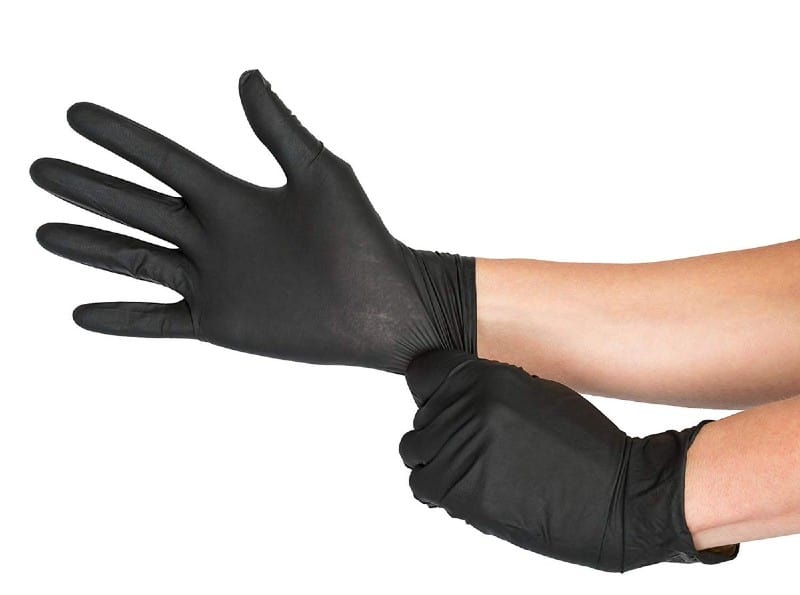
After you succeeded in catching an armadillo with the trap, make sure to wear reusable gloves and keep the cage on a distance to avoid contact with the animal. If the wildlife regulations in your state permit, take the caught armadillo into a humid environment (at least 5 miles from your home) and set it free.
When releasing an armadillo, allow the animal to exit the cage calmly. Ascertain that armadillo’s burrow is empty and fill it with gravel so that other pests like moles do not settle in it.
[su_note note_color=”#e5e2d4″]Related post: How to Get Rid of Porcupines [/su_note]
How to Prevent Armadillo’s Return?
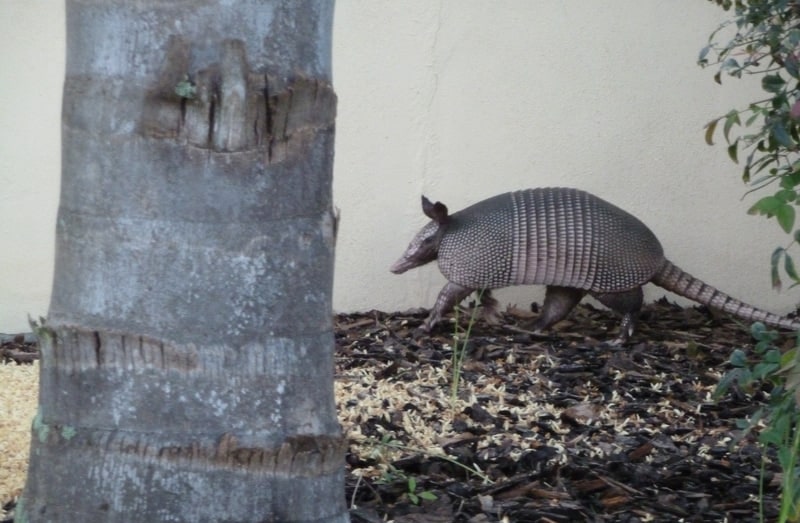
When the pest is removed from your lawn, garden, etc, make your property less preferable for armadillos or new invaders. Armadillos are attracted to food that mostly lives in the soil. Larvae and insects living at a depth of 7 inches underground are their favorite delicacy. So, it is almost impossible to remove armadillo attractants from your garden completely.
However, there are some essential steps you can follow:
- Remove weeds, lowland bushes, and shrubs. Armadillos prefer to hide in places with thick coverings, so if you clean your yard, there’ll be fewer chances of an armadillo comeback.
- Clean fallen berries and fruits. Some individuals are attracted to the sweet harvest.
- Spoil the underground food source with a natural organic repellent (for example, castor oil.)
FAQ
When Is the Best Time to Catch an Armadillo?
Armadillos are more active at night than in the daytime. They also can search for food when the sun shines, but it happens quite rarely. In cold weather or after heavy rain, when worms appear in the soil, you can be sure that an armadillo is actively feeding.
What Does Armadillo Poop Look Like?
Armadillo excrements look like small balls and mostly depend on what the animal has been eating lately. Their feces usually contain parts of beetles and other insects that make up their diet.
What Do Armadillos Eat?
Armadillo’s typical diet includes ants, worms, termites, and other bugs and larvae from the soil. Besides bugs, armadillos can also feed on small vertebrates, plants, and some fruits.
How Do You Set a Trap for an Armadillo?
Most pest catchers and exterminators recommend trapping armadillos using a special trap. To catch an armadillo in a live trap, you need to purchase a trap large enough to catch any animal in your garden. It would be suitable for catching an armadillo too.
[su_note note_color=”#e5e2d4″]Related post: How to Trap a Beaver [/su_note]
Best Armadillos Traps: Choose the Best Deals
1. Best Way of Trapping Armadillos: Havahart 1045 Live Animal Cage Trap
[amazon box=”B0000AVWMX” template=”vertical” tracking_id=”how-to-trap-armadillos-20″ button_text=”Check price on Amazon” button_detail=”https://shareasale.com/r.cfm?b=410159&u=2583381&m=43235&urllink=www%2Edomyown%2Ecom%2Fhavahart%2Dlarge%2D2door%2Dtrap%2D1045%2Dp%2D7341%2Ehtml&afftrack=how%20to%20trap%20armadillos” button_detail_text=”Check price on DoMyOwn”]
Specifications:
- Material: Alloy Steel
-
Special Features: Maximum resistance to rust and corrosion
- Item Weight: 12.8 Pounds
- Item Dimensions LxWxH: 36 x 10 x 12 inches
- Target Species: Groundhog, Armadillo, Cat, Raccoon, Opossum
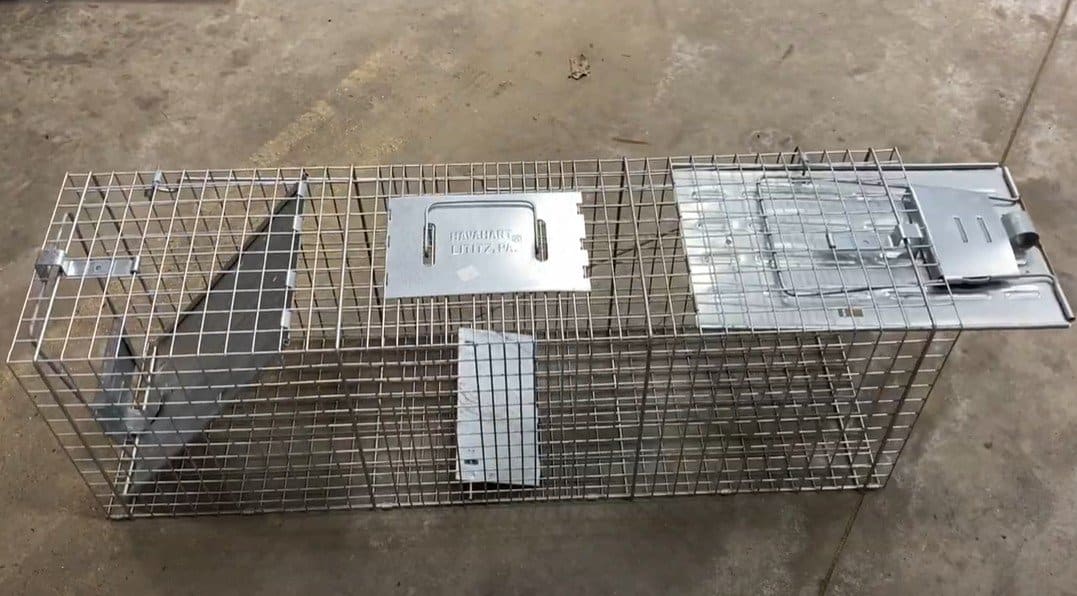
Havahart is a well-known brand in the world of animal trapping cages. This trap is perfect if you decided to catch an armadillo in a live trap. So if you need a working tool that will be a solution for how to trap armadillos on your lawn or garden, buying this kind of traps is an ideal option for you. This trap is exceptionally useful, as it is made of high-quality material. It is also resistant to dust and corrosion damages.
| Pros: | Cons: |
|
|
2. Convenient Option for Catching an Armadillo or Other Pests – Duke Traps Heavy Duty Large Cage Trap
[amazon box=”B002FYDCN6″ template=”vertical” tracking_id=”how-to-trap-armadillos-20″ button_text=”Check price on Amazon” button_detail=”https://shareasale.com/r.cfm?b=410159&u=2583381&m=43235&urllink=www%2Edomyown%2Ecom%2Fduke%2Dtraps%2Dheavy%2Dduty%2Draccoon%2Dand%2Darmadillo%2Dtrap%2D1112%2Dp%2D9909%2Ehtml&afftrack=how%20to%20trap%20armadillos” button_detail_text=”Check price on DoMyOwn”]
Specifications:
- Material: Alloy Steel
-
Special Features: Maximum resistance to rust and corrosion
- Item Weight: 0.05 Pounds
- Item Dimensions LxWxH: 30 x 12 x 12 inches
- Target Species: Armadillo, Cat, Raccoon

If you are looking for a good armadillo trap, take a look at this one. Duke traps always provide high-quality cages for small pests. This cage is made with high-quality steel, and it has smooth edges inside. It is also multifunctional, so you can use it to catch other animals like rabbits or possums.
| Pros: | Cons: |
|
|
3. Trapping Armadillos: Overall Thoughts
I hope this guide on how to attract armadillos and catch them will help you to understand the methods of how to trap armadillos in the most humane way. Feel free to learn some of the basic principles I spent years to figure out!
[su_note note_color=”#dbe1d3″]Related Post: Best Deer Repellents Reviewed[/su_note]
If you want to trap an armadillo, you have to be careful with placing the cage and releasing process. Remember that is is not allowed to shoot or kill these animals, so always check for your local regulations to know how to catch armadillo in a trap in the best way.
Anyways, even the most experienced people need advice. Have you ever tried catching an armadillo in your yard or lawn? Did you use baits? Please, feel free to share your experiences on how to bait an armadillo trap if you succeeded.
References:
- Nine-Banded Armadillo(Wildlife Resources Agency):
https://www.tn.gov/twra/wildlife/mammals/medium/nine-banded-armadillo.html - Transmission (Centers for Disease Control and Prevention):
- https://www.cdc.gov/leprosy/transmission/index.html

